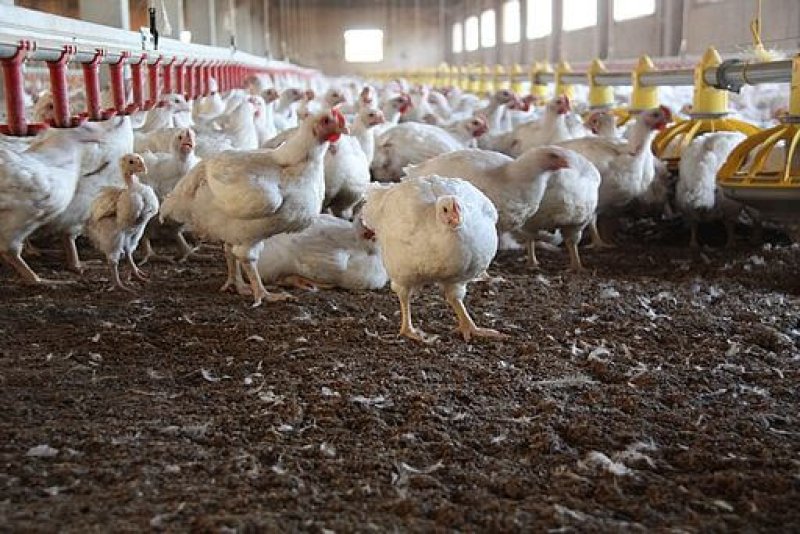Avian bird flu, found recently in backyard poultry in the Pacific Northwest, could devastate poultry producers now that China has added its name to the list of countries banning U.S. poultry products, including eggs and live breeding stock.
The strains, H5N2 and H5N8, are similar to infections found late last year in Germany, the United Kingdom and the Netherlands, as well as on commercial farms in British Columbia, Canada. Canadian poultry exports are also banned by seven countries.
The outbreak began in Asia last January and caused producers to cull nearly 600,000 poultry in South Korea and 120,000 in Japan, according to the World Animal Health Organization.
Large-scale commercial facilities respond to the threat of infection by creating physical barriers and cleaning living areas. Producers also swiftly culled flocks as necessary.
For traditionally raised poultry by small households or farms in poor countries, the same measures are not practical. Vaccinations are often the preferred prevention method, but if not monitored, vaccinated birds could still catch mild forms of the flu and unsuspectingly pass it onto other birds. Additionally, viruses are good at mutating and slipping past vaccines.
One fairly novel solution exists, at least in concept—genetically engineered chicken—but before a product could even be marketed, it first needs to win over regulators and producers.
According to the study in Science journal published in January 2011, researchers in the UK genetically inserted a gene into chickens that diverted an enzyme necessary in the transmission of the bird flu H5N1. The transgenic chickens died within days, but they stopped the virus from infecting other poultry—even nontransgenic chickens.
The team comprised of researchers led by Helen Sang from the Roslin Institute at the University of Edinburgh said that genetic modification is more effective than vaccines that are currently used because the transgenic technique works even if the virus mutates.
“Our goal was a proof-of-principle demonstration that genetic modification can be used to prevent avian influenza infection in chickens…
Our approach is technically applicable to other domestic species that are hosts of influenza A, such as pigs, ducks, quail, and turkeys.”
Transgenes can be added to multiple varieties of poultry without affecting genetic diversity or valuable production traits, the researchers added.
Scientists at the time of the study were responding to the H5N1 epidemic of 2005-2006, which spread from Asia into Europe and Africa killing nearly 400 people and hundreds of millions of poultry.
But fast forward four years and two related viruses, H5N2 and H5N8, have now been found around the world.
In the U.S., the avian flu could be economically devastating to poultry producers. China is the thirty-first country in addition to the European Union to cut off U.S. poultry exports (ranging from the specific areas affected by the flu to the entire country), according to a U.S. Department of Agriculture Food Safety and Inspection Service list.
The financial impact could be deep. U.S. exports of poultry products sent to China reached nearly $272 million during the first 11 months of 2014, said Toby Moore, spokesman for the U.S. Poultry & Egg Export Council.
The avian flu has also been studied with some concern due to its potential to recombine with human influenza. Humans who are in regular contact with birds have become infected in rare cases, but so far, transmission from person-to-person has not been reported. This particular strain has not yet affected humans.
However, Ron Fouchier, a Dutch virologist at the Erasmus Medical Center, and Yoshihiro Kawaoka of the School of Veterinary Medicine at the University of Wisconsin, demonstrated that “it takes only five mutations to transform the bird flu virus into a form that is transmissible from mammal to mammal by coughs and sneezes. Two of the five mutations have already been found in wild birds—which means that some avian virsuses are just three mutations away from becoming transmissible between mammals.”
However, organic activists say that the large-scale farms are part of the reason the avian flu can be so devastating.
Organic farmer Tim Elsdale said:
“Organic methods of husbandry doesn’t encourage disease if the animals are well spaced enough. They live in a natural environment and they eat normal food then a lot of diseases that are prevalent on conventional farming would not be apparent to us.”
Peter Melchett, policy director for the UK organic farming advocacy group Soil Association and a well known anti-GMO activist, echoed that sentiment:
“Keeping animals cramped together in inhumane factories encourages the spread of diseases such as bird flu and swine flu,” he said. “This GM fantasy simply tries to cover up for flawed farming practice.”
Yet that doesn’t ring true with the experience thus far in the U.S., where the avian flu has yet to hit commercial poultry farms. It’s the backyard poultry flocks and wild birds that have been infected.
While the world faces yet another outbreak of the avian flu, it is obvious there is need for a solution. The UK research team proved the concept in 2011. In time, perhaps, genetic engineering may help prevent avian flu from devastating livelihood or even human life.
Rebecca Randall is a journalist focusing on international relations and global food issues. Follow her @beccawrites.
Additional resources:
- New Bird Flu Strain Prompts Call for Prevention Efforts, Western Farmer-Stockman
- Could GM Chicken Halt Bird Flu? Food Safety News
- Designer Livestock, the Scientist
- GM chickens: a solution for bird flu? SciDev Net































